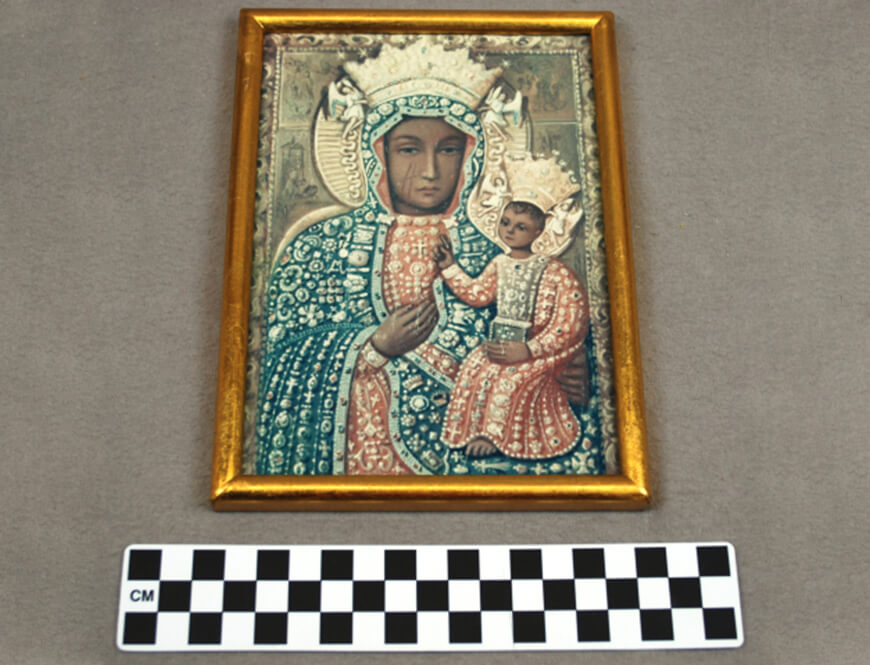This object is a small print representing the Black Madonna of Czestochowa. The Black Madonna of Czestochowa also known as Our Lady of Jasna Gora is a revered icon of the Virgin Mary. Today the original painting sits in Jasna Gora Monastery in Czestochowa, Poland and has been there for six centuries. There are many stories surrounding the history of the original painting, some seem to be more fantasy than fact, and these stories have inspired many artists to create their own versions of this famous work of art. The print shown above, from the ITC collection, is one of a set of 15 different versions of the Black Madonna of Czestochowa.
The original painting is said to have been painted by St. Luke and it remained in the holy land until it was discovered by St. Helena of the Cross sometime in the 4th century. After this discovery it was then moved to Constantinople, where it was proudly displayed by St. Helena’s son, the Emperor Constantine. Around 803 C.E. the painting was passed on to Prince Leo of Ruthenia. It remained in the royal palace, in present day northwestern Hungary, until the eleventh century when there was an invasion. The painting was then transferred to the Jasna Gora Monastery in Poland at the request of Ladislaus of Opole. Once the painting was in the hands of Ladislaus, the history became better documented.
In 1392 Tatars attacked the fortress at Belz and one of the arrows hit the painting lodging itself in the throat area. Fearing that the painting would be captured by the Tatars, Ladislaus fled with it to the town of Czestochowa and the painting was installed in the church. In 1430 Hussite looters attacked the church and one attacker struck the painting with his sword. The damage due to the sword and arrow can still be seen today. By 1655 Poland was overrun by Swedish forces. The monks at the monastery were able to defend the portrait during a forty day siege. Following the win against Sweden the Lady of Czestochowa became crowned as Queen of Poland.
Throughout the centuries there has been many reports of miraculous events surrounding the painting. The name Black Madonna was given due to the soot residue that discolors the painting. The soot comes from centuries of candles burning in front of the painting. Today the feast day of the Black Madonna is celebrated on August 26. Many people make the pilgrimage to see the painting, leaving from Warsaw every year since 1711 on August 6th, the pilgrimage lasts 9 days and covers roughly 140 miles.
The Black Madonna is popular in places like Ukraine, Belarus, and Russia. In the United States there is a National Shrine of Our Lady of Czestochowa which is located in Doylestown, Pennsylvania. The shrine was founded in 1953 and features a replica of the painting.
